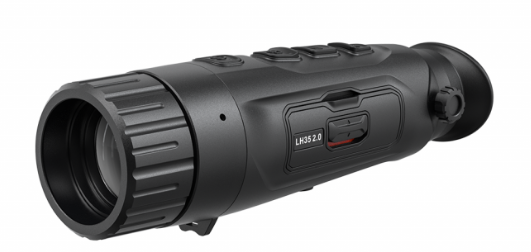HIKMICRO Lynx Pro 35mm – A Serious Thermal Monocular Without the Premium Price Tag
Thermal imaging has made huge strides in recent years, but with that progress has come a crowded and often confusing market. Devices range from budget-friendly entry models to ultra-premium military-grade optics — and for the everyday hunter, shooter, or wildlife spotter, the question is often: where’s the sweet spot between price and performance?
Enter the HIKMICRO Lynx Pro 35mm, a thermal monocular that has been quietly making waves for delivering serious performance specs without breaking the bank. With a highly sensitive 384x288 thermal sensor, advanced 12µm pixel pitch, and impressive 20mK thermal sensitivity, it punches well above its price bracket — offering real-world functionality that rivals much more expensive alternatives.

Sensor Resolution: 384x288 – What Does That Actually Mean?
The HIKMICRO Lynx Pro is built around a 384x288 thermal sensor, which refers to the number of thermal pixels the device uses to build a heat image. Every one of these 110,592 pixels is detecting temperature changes in the environment and turning that into a visible thermal picture.
So why does this matter? A higher resolution sensor means more detail, and more detail means better target recognition. Whether you're scanning a tree line for a fox or trying to pick out a rabbit against a warm field, that extra resolution allows you to distinguish between, say, a small animal and a clump of warm grass.
In simple terms: the image you see is sharper, and your chances of misidentifying a target are lower.

NETD / mK Rating: 20mK – A Critical Measure of Sensitivity
NETD stands for Noise Equivalent Temperature Difference, and in the case of the Lynx Pro, the sensor is rated at <20mK (millikelvins). This might sound technical, but here’s the gist: it’s a measure of how small a temperature difference the thermal sensor can detect.
The lower the mK value, the more sensitive the sensor is to subtle differences in temperature — and 20mK is considered extremely good, even in high-end thermals.
Real-world benefit: spotting a fox lying in grass on a cold night, even if its body temperature differs only slightly from the environment. A 50mK sensor would blur it into the background — the Lynx Pro won’t.
Focal Length: 35mm – The Goldilocks Lens for Mid-to-Long Range
The 35mm focal length lens on the Lynx Pro strikes the perfect balance. Shorter lenses (15mm, 19mm) are wide but lack reach, while 50mm+ lenses can feel tunnelled in close quarters. The 35mm lens allows you to scan widely while still achieving clear target identification at 300–400m and detection beyond 1000m.

Real-World Performance in Varied Conditions
What separates a good thermal from a great one is performance when conditions aren’t ideal — fog, rain, humidity, or residual ground heat. The Lynx Pro’s low NETD ensures animals remain visible when cheaper thermals would lose contrast.
Hotspot tracking, picture-in-picture zoom, and an intuitive interface make it easy to operate in the field without getting bogged down in settings.
Value for Money and Market Positioning
The Lynx Pro sits well below £1,500 while offering performance usually reserved for thermals in the £2,000–£3,000 range. It’s an outstanding option for hunters and rural landowners who want high-end detection without overspending.

How It Compares to Premium Competitors
While Pulsar and InfiRay may offer higher resolutions or more features (like app streaming), the Lynx Pro holds its own in the key areas: image quality, sensitivity, and range. For many users, that’s what matters most.
Verdict: High-End Thermal Power at a Mid-Tier Price
The HIKMICRO Lynx Pro 35mm is a sharp, capable, and highly sensitive thermal monocular that delivers exceptional performance at a sensible price. For mid-to-long range spotting, it is one of the best-value thermal monoculars available today.










